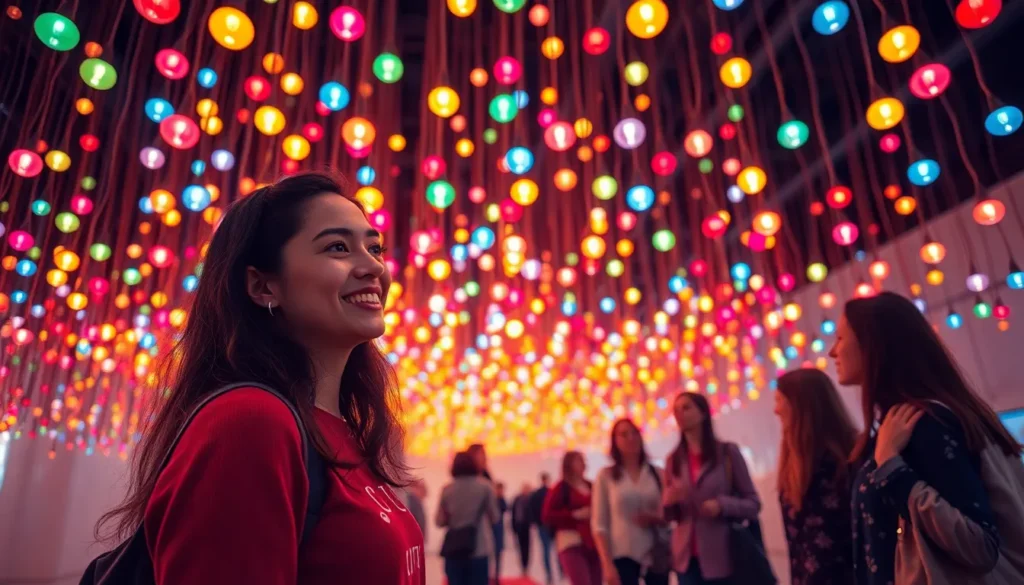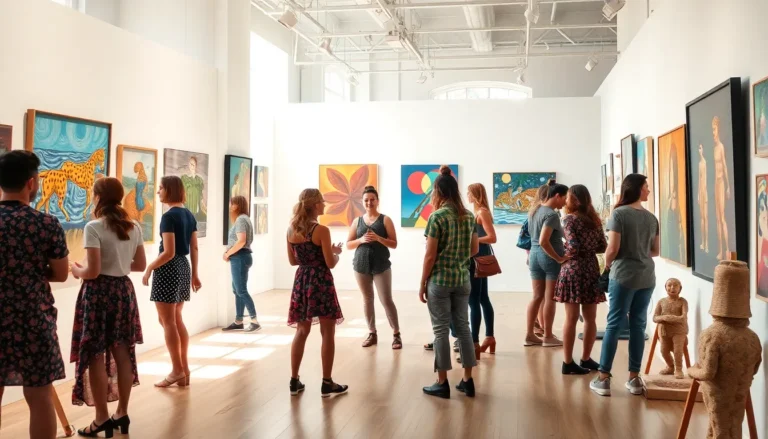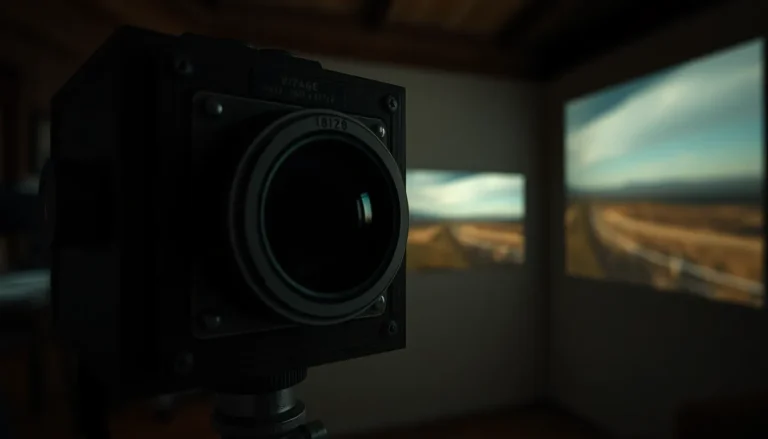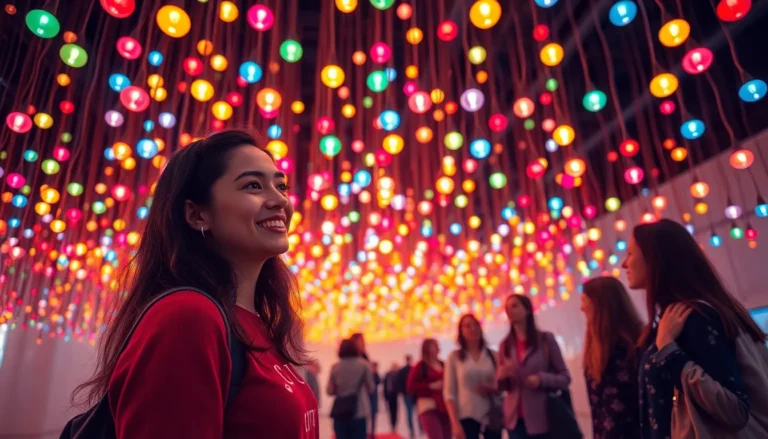Table of Contents
ToggleIn a world where art often hangs on walls and sits on pedestals, installation art bursts onto the scene like a confetti cannon at a quiet dinner party. This immersive form of creativity transforms spaces into experiences, inviting viewers to step inside and become part of the artwork. Imagine wandering through a forest of hanging lights or navigating a maze of mirrors—installation art isn’t just seen; it’s felt.
Overview of Installation Art
Installation art involves creating three-dimensional works that transform a space and involve viewers physically and emotionally. Artists use various materials and techniques to construct these immersive environments, which often provoke thought and evoke feelings. Different forms of installation art include site-specific installations, where artwork is tailored to a particular space, and interactive installations, which invite audience participation.
Common themes in installation art include identity, culture, and technology. By addressing these topics, artists encourage viewers to reflect on their own experiences and societal issues. For instance, environmental concerns often surface in installations that incorporate natural elements or highlight ecological degradation.
Materials widely used in installation art range from traditional items like wood and metal to non-traditional components such as light, sound, and digital media. These diverse materials allow artists to explore various dimensions and create multi-sensory experiences. Many installations challenge the boundaries of art, pushing the viewer to explore not only the physical aspects but also conceptual ideas.
Exhibitions of installation art typically occur in galleries, museums, and public spaces. Context plays a crucial role in how viewers interpret each piece, as the surrounding environment can greatly influence their engagement and understanding. The interaction between the artwork and the viewer creates a dialogue, fostering connections in ways that traditional art forms might not.
Overall, installation art represents a significant shift in how art is experienced, emphasizing active engagement over passive observation. This approach reshapes the traditional relationship between the artist, the artwork, and the audience.
Historical Context
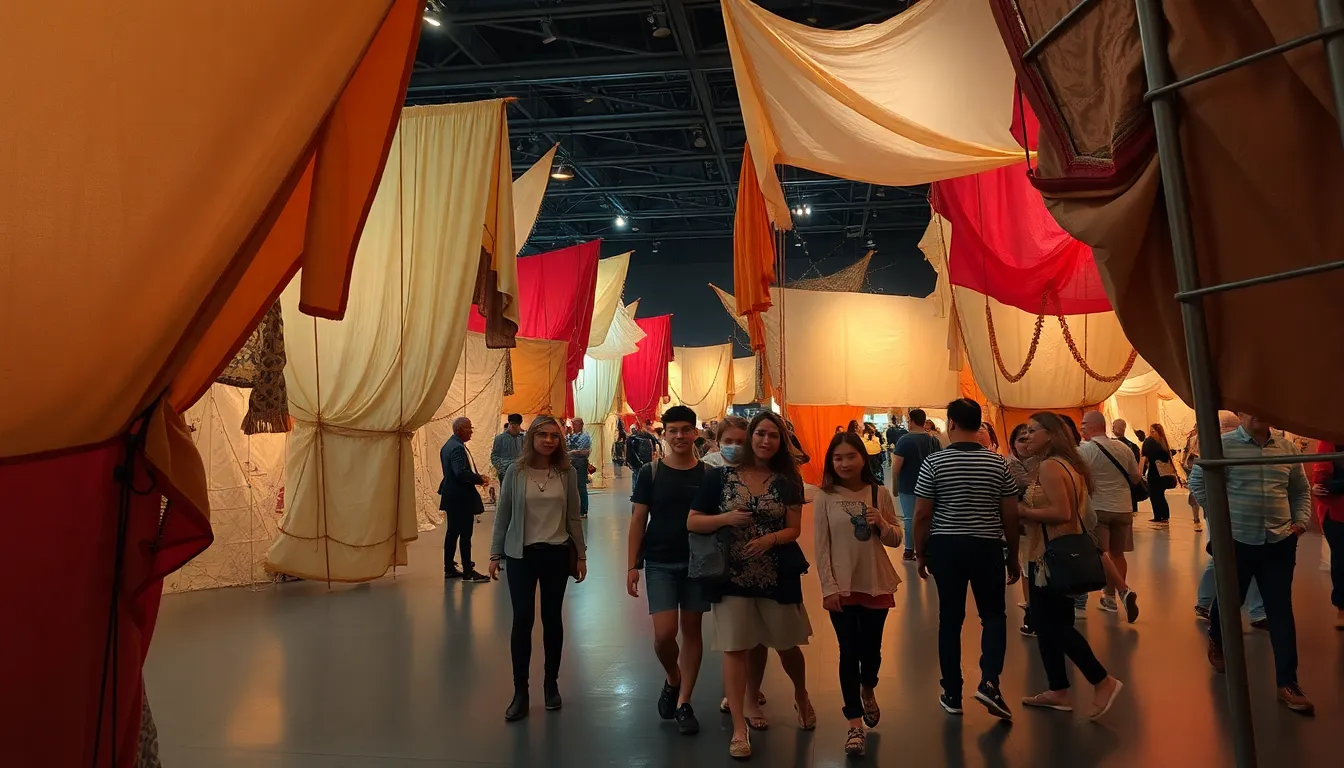

Installation art emerged as a significant form of artistic expression in the 20th century, reflecting societal changes and cultural movements. This art form invites viewers to engage with spaces, making it a powerful medium for commentary on contemporary issues.
Origins of Installation Art
Installation art traces its roots to early 20th-century movements like Dadaism and Surrealism. Artists such as Marcel Duchamp challenged traditional perceptions of art through unexpected juxtapositions. The 1960s saw a surge of experimental approaches, with figures like Allan Kaprow introducing “Happenings.” These events integrated performance with visual art, changing how people experienced creativity.
Evolution Through Decades
The 1970s and 1980s marked critical development periods for installation art. Artists began creating large-scale, immersive environments, prompting viewer interaction. Influential installations like Christo and Jeanne-Claude’s environmental works drew public attention, emphasizing the relationship between art and space. By the 1990s, technology transformed installations, allowing digital media to enhance audience experiences. Artists such as Olafur Eliasson incorporated light and sound, further engaging emotions and senses.
Key Characteristics of Installation Art
Installation art possesses distinctive traits that elevate it beyond conventional art forms. Its significance lies in how it transforms spaces and engages senses.
Space and Environment
Space plays a central role in installation art. Artists often tailor their work to specific environments, creating site-specific installations that resonate with their surroundings. This phenomenon encourages viewers to engage with the space holistically, often prompting a reevaluation of their surroundings. Installations utilize architecture and spatial dimensions to craft immersive experiences. In doing so, they invite viewers to explore how the artwork intersects with physical elements like light, texture, and form. Artists may also employ non-traditional materials to highlight environmental themes, merging artistic expression with tangible contexts.
Interaction and Experience
Interaction defines installation art. Unlike traditional artworks, installations invite active participation from viewers, fostering personal connections. Audiences often navigate installations, making choices that shape their experience. These interactions enhance the emotional and intellectual engagement. Many installations include sensory elements, such as sound or light, which deepen the immersive quality. By promoting exploration and spontaneity, creators enable viewers to co-create meaning. This dynamic relationship transforms passive viewing into an active dialogue, emphasizing the artwork’s impact on individual perspectives and collective experiences.
Prominent Installation Artists
Several installation artists have made a significant impact in the art world, each contributing unique perspectives and experiences through their work.
Artist Spotlight: Yayoi Kusama
Yayoi Kusama captivates audiences with her immersive environments, filled with vibrant colors and repeated patterns. Often recognized for her Infinity Mirror Rooms, she creates spaces that engage viewers through reflections and illusions. Her artistic approach emphasizes themes like infinity and self-obliteration, encouraging visitors to reflect on their identities. In addition, Kusama utilizes various materials, including whimsical polka dots and large-scale sculptures, enhancing her installation experiences. Exhibited globally, her work fosters inclusivity, inviting everyone to participate in her visionary worlds.
Artist Spotlight: Damien Hirst
Damien Hirst challenges conventional art norms with provocative installations, stimulating both thought and discussion. Known for works like The Physical Impossibility of Death in the Mind of Someone Living, he combines shock and beauty in equal measure. His use of unusual materials, such as preserved animals and medical artifacts, raises ethical questions about life and death. Installation pieces often prompt emotional responses, compelling viewers to confront their fears. Hirst’s innovative explorations within the installation genre consistently redefine boundaries, ensuring his influence on contemporary art remains profound.
Impact and Reception
Installation art holds significant cultural weight, bridging diverse themes and engaging communities. This art form challenges norms and provokes discourse, encouraging societal reflection.
Cultural Significance
Cultural narratives frequently emerge through installation art, allowing artists to address identity and community issues. Many installations are site-specific, reflecting the historical and social context of their locations. Engagement with local cultures provides deeper connections for viewers, making art accessible and relatable. Artists like Yayoi Kusama and Olafur Eliasson use their platforms to highlight cultural phenomena, promoting conversations around globalization and environmental awareness. Community involvement often enhances the impact, fostering collective experiences and inviting diverse perspectives into the dialogue.
Critiques and Controversies
Critiques surrounding installation art commonly focus on its accessibility and the subjective nature of interpretation. Some critics argue that certain installations prioritize style over substance, leading to debates about the validity of the medium. These discussions highlight the tension between commercialism and artistic integrity, particularly when popular installations attract massive crowds. Controversies also arise when installations challenge societal norms or confront sensitive topics, leading to mixed reactions from audiences. In exploring themes of death, identity, or consumerism, artists like Damien Hirst often provoke significant discussions that divide public opinion.

